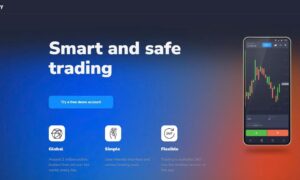Imagine walking into a gym and being handed the keys to the equipment, the protein bar fridge, and a personal trainer—on the house. The only catch: you have to follow a few safety rules and split any prize money you win at the next bodybuilding contest. That, in a nutshell, is what a modern prop trading firm does for the financial markets. The company provides you with a trading account and retains a portion of the profits you generate. You never risk your savings, but you still enjoy the upside of a much larger account.
Prop trading versus “normal” trading
Traditional retail brokers earn commissions whether you win or lose, so their incentive is volume. A prop firm only makes money when you do, so its incentive is performance. That single fact changes everything:
- Conditions are beneficial for traders with low commissions and competitive spreads
- Risk departments monitor you in real time—think of them as guardrails on a mountain road.
- The most competitive programs provide essential, high-quality trading infrastructure—including robust, real-market-like execution, comprehensive charting, and flexible platforms—which are necessary for a trader to effectively engage the market.
Where the capital comes from
Ever wonder why Citadel Securities or Jane Street can quote millions of shares without blinking? They are prop houses, trading their own equity. Your $2,000 enrolment fee is not used as trading margin; it is an insurance premium that covers technology, data, and potential losses. The actual buying power is printed on the firm’s own ledger, often 20-50 times larger than the fee you paid.
How the profit split really works
A typical deal will consist of a 75/25 split after costs. In some cases, the first reward can be requested anytime with following by every 14 days or 7 with add-ons!. Add-ons such as the “90 % payout boost” (which is popular across lots of firms) raise your share to 90 % in exchange for a slightly higher subscription. Compare that with hedge-fund traders who earn 10-20 % of performance after investors take 80 % and you see why prop shops are attractive.
The two gateways: evaluation vs. instant funding
Evaluation route – You can start from as little as $39, Trade a virtual account with no time limits, simply hit the profit targets required, and move onto an account where you can receive a share of the profits.
Instant funding – You skip the audition, start on a virtual book from day one, and can request your first payout as quickly as 7 days.. Faster, but drawdown limits are enforced from tick one.
There is no “better” door; there is only the door that matches your psychology. If you already have a track record and hate waiting, the instant funding path removes the artificial clock.
Risk Rules That Keep Both Sides Alive
Hantec Trader rules are designed to ensure responsible trading and long-term sustainability for both the trader and the firm. They function as mandatory risk management protocols:
- Maximum Daily Loss: This is capped at 4–6% of the prior end-of-day balance to prevent single-session blow-ups.
- Overall Loss Limit: Programs employ either Static or Trailing Drawdown rules, with overall loss limits ranging from 6% to 10% of the starting equity, depending on the program chosen.
- Trading Restrictions: Policies on news trading and over-weekend exposure vary by program; some permit these activities while others impose specific restrictions to manage market volatility.
- Leverage Cap: Leverage is capped as high as 1:50 to provide meaningful buying power while limiting excessive risk.
Enforcement: Break any rule, and the risk engine will flatten all open positions instantly and close the account. Harsh? Perhaps, but these circuit-breakers are essential for maintaining the integrity of the firm’s simulated capital and ensuring the program remains viable for all successful traders.
The psychology edge no one talks about
When the capital at risk is not your rent money, the amygdala stays quiet. You stick to the plan, cut losers faster, and let winners run. A 2021 University of Cambridge paper found that traders using “house Resources as opposed to capital” increased Sharpe ratios by 0.27 simply because they removed the fear of personal ruin. (Journal of Banking & Finance, Vol. 133)
Career path: from bedroom to boardroom
Step 1: Pass the evaluation or buy instant funding.
Step 2: Hit consistent returns – do not compare to a specific job role. Something such as ‘$200k account can yield up to $10,000 per month with 5% returns.
Step 3: Scale your trading allocation up to $300,000 based purely on consistent, successful performance within the program. The ceiling for your growth is determined entirely by your performance metrics, not internal politics or corporate structure.
Red flags when you choose a partner
Since the modern proprietary trading industry is not regulated as a financial service, focus on a firm’s operational transparency and market reputation before committing.
Walk away if you observe any of the following:
- Unclear Drawdown Calculation: The exact mechanism for calculating loss limits (whether static, trailing, or prior end-of-day balance) is vaguely defined or difficult to find.
- Payout Delays: Payouts routinely take longer than the stated operating times (e.g., if they promise bi-weekly payouts but frequently exceed that timeframe).
- Poor Trading Conditions: The firm provides poor trading conditions, such as high spreads with mark-ups exceeding 1 pip on major pairs (like EUR/USD) or notably slow execution speed.
- Missing Market History/Reputation: The firm lacks a positive, verifiable reputation within the trading community and cannot clearly demonstrate experience in financial markets (ee.g, via a history with a regulated broker partner).
Verification Tip: Instead of checking for a prop firm’s regulatory status, check if the prop has a positive reputation and experience in financial markets—this is your primary safeguard. Look for clear, recent, independent reviews and ensure they openly disclose their broker partner.
Tax and legal side-notes
The core relationship between the firm and the trader is that of a commercial contract.
- Contractor Status: Traders are typically treated as independent contractors and are therefore entirely responsible for managing their own tax affairs and legal compliance within their local jurisdiction.
- Income Classification: The profit share you receive from the firm is generally classified as self-employment income (or business income), not capital gains.
- Record Keeping: You must diligently maintain a spreadsheet or ledger of every withdrawal received from the firm, as this documentation is necessary for local tax declarations.
- Live Account Upgrades: In the rare event that the firm offers an upgrade to a live funding allocation, the nature of the money being traded may be re-classified. Always consult a qualified accountant in your region before filing to confirm the correct classification of your trading income.
Ready to start?
If you already have three months of verifiable track record and want capital this week instead of next quarter, open an instant funding account with a broker-backed program such as Hantec Trader—the same group that supplied the risk metrics quoted above. You could be booking your first virtual profit this afternoon and requesting a real payout seven days later.
Bottom line
A prop trading firm is simply a talent incubator that monetises skill instead of customer flow. Bring a repeatable edge, respect the drawdown line. Skip the hype, read the rule book twice, and your trading career can scale faster—and safer—than you ever thought possible. Remember, payouts are real money, so track your withdrawals and keep a verified journal—auditable performance is what unlocks the next allocation bump. Treat the partnership like a business, not a lottery ticket, and the firm becomes both your bankroll and your launchpad.

































